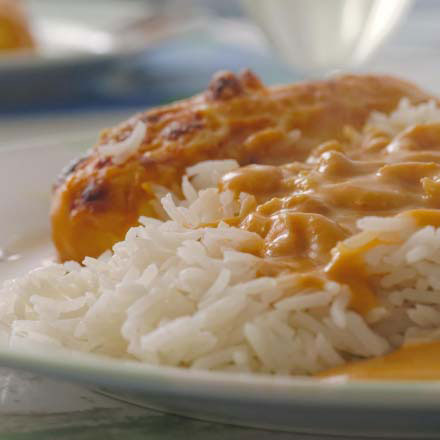
Rice is an important food item to help satisfy that hunger. Filipino rice imports by country cost a total US$736.6 million from 9 rice-supplying trade partners during 2018.
The value of rice imported into the Philippines expanded by 65.1% since 2014 when rice purchases cost $446.2 million. Year over year, the imported grain’s expense more than doubled (up 105.9%) from $357.7 million 2017 to the latest results in 2018.
Among continents, fellow Asian countries accounted for over 99% of the Philippines’ imported rice bill during 2018. There were two exceptions, with $9,000 worth of rice coming from Spain and another $8,000 worth shipped in from Italy.
The 4-digit Harmonized Tariff System code (HTS) prefix for rice is 1006.
Philippines Rice Imports by Country
Suppliers
Below are the 9 countries that supplied 100% of the rice imported into the Philippines for 2018.
- Thailand: US$355.2 million (48.2% of total rice exports)
- Vietnam: $280.7 million (38.1%)
- India: $45.1 million (6.1%)
- China: $30.7 million (4.2%)
- Pakistan: $21.3 million (2.9%)
- Myanmar (Burma): $3.5 million (0.5%)
- Cambodia: $48,000 (0.007%)
- Spain: $9,000 (0.001%)
- Italy: $8,000 (0.001%)
Overtaking Vietnam as the Philippines’ number one rice supplier in 2018, Thailand (up 354.7%) was also the third-fastest growing provider of rice to the Philippines since 2014 ahead of India (up 120.9%).
However, the fastest-growth over that 5-year period belongs to suppliers in Pakistan (up 24,615%) and China (up 593.9%).
Advantages
The Philippines also grows its own rice supplies, but shipped just $470,000 worth of the grain product into international markets during 2018.
Nevertheless, the Philippines did post positive net exports for rice during 2018 with the six trade partners shown below.
Investopedia defines net exports as the value of a country’s total exports minus the value of its total imports. Thus, the statistics below present the surplus that the Philippines earned. In other words, the positive difference between the value of Filipino rice exports and its import purchases for that same commodity.
- Bangladesh: US$100,000 (net export surplus for rice)
- United Arab Emirates: $86,000
- Canada: $72,000
- Kuwait: $25,000
- Saudi Arabia: $25,000
- Hong Kong: $6,000
In addition to highly populated Bangladesh, three of the four top countries that propelled the Philippines to surplus wins in the international rice trade are in the Middle East. This positive cashflow confirms the Philippines competitive advantage for this specific product category in its trade with these trade partners–as it does for the other listed countries.
Opportunities
Below are the 9 countries that caused the highest rice deficits for the Philippines during 2018.
- Thailand: -US$355.2 million (net export deficit for rice)
- Vietnam: -$280.7 million
- India: -$45.1 million
- China: -$30.7 million
- Pakistan: -$21.3 million
- Myanmar (Burma): -$3.4 million
- Cambodia: -$48,000
- Spain: -$9,000
- Italy: -$8,000
Combined, Thailand (48.3%) and Vietnam (38.1%) represent 86.4% of the Philippines’ overall product-specific deficit for rice in 2018.
Resources
The World Factbook, East & Southeast Asia: Philippines (People and Society–Population), Central Intelligence Agency. Accessed on April 4, 2019
The World Factbook, Field Listing: Exports – Commodities, Central Intelligence Agency. Accessed on April 4, 2019
Trade Map, International Trade Centre. Accessed on April 4, 2019
Investopedia, Net Exports Definition. Accessed on April 4, 2019
Wikipedia, Rice. Accessed on April 4, 2019